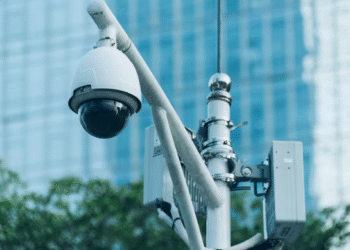In today’s dynamic business environment, managing people and payroll efficiently is essential for long-term success. A Human Resource Management (HRM) Payroll System is not just a tool—it’s the foundation for building a productive, compliant, and motivated workforce. Businesses that leverage modern HRM payroll systems gain a competitive edge by automating processes, reducing errors, and improving employee satisfaction.
What is an HRM Payroll System?
An HRM Payroll System is an integrated platform designed to streamline both human resource management and payroll processing within an organization. It handles tasks like attendance tracking, salary calculation, tax deductions, benefits administration, compliance management, and employee data management in one unified system.
Modern systems like Superworks combine automation, analytics, and AI-driven decision-making to simplify HR operations while ensuring accuracy and compliance.
Key Features of an HRM Payroll System
1. Employee Database Management
The system stores comprehensive employee records including personal details, work history, performance data, and salary information. This centralized database eliminates the need for manual recordkeeping and ensures data consistency across departments.
2. Automated Payroll Processing
Payroll automation is one of the most crucial features. The system automatically calculates gross salary, deductions, allowances, bonuses, and net pay based on predefined rules. This minimizes human errors and saves significant administrative time.
3. Attendance and Leave Management
Modern HRM systems integrate with biometric or digital attendance solutions to track working hours, late entries, leaves, and holidays. It helps ensure accurate payroll processing and transparent attendance reporting.
4. Statutory Compliance
Keeping up with PF, ESI, TDS, gratuity, professional tax, and labor laws can be challenging. An HRM payroll system ensures that every payroll cycle complies with local and national regulations automatically, reducing the risk of penalties or legal issues.
5. Employee Self-Service Portal
Through a self-service dashboard, employees can access payslips, apply for leave, update details, and view tax information without depending on HR personnel. This improves transparency and employee engagement.
6. Performance and Appraisal Management
The system can link payroll with performance metrics, allowing organizations to reward employees based on their contributions. Automating performance appraisals helps ensure fairness and motivation across teams.
7. Reports and Analytics
With advanced analytics and customizable reports, businesses gain insights into labor costs, attrition rates, salary structures, and attendance trends. This helps management make data-driven decisions.
Benefits of Implementing an HRM Payroll System
1. Enhanced Accuracy and Efficiency
Manual payroll processing often leads to miscalculations and delays. An automated HRM payroll system ensures precise calculations, reducing costly errors and compliance risks.
2. Time and Cost Savings
Automation eliminates repetitive tasks like data entry, report generation, and manual calculations, allowing HR teams to focus on strategic initiatives that drive growth.
3. Improved Compliance and Transparency
By staying up to date with tax laws and labor regulations, HRM systems maintain compliance automatically. Employees also gain full visibility of their payslips, deductions, and benefits.
4. Better Employee Experience
Employees appreciate timely salary payments, accurate payslips, and easy access to HR services. This fosters trust, engagement, and overall satisfaction.
5. Scalability and Customization
Whether you’re a small business or a large enterprise, HRM payroll systems can scale as your workforce grows. They can also be customized to fit your specific organizational needs and policies.
6. Data Security and Confidentiality
With advanced encryption and access controls, HRM systems protect sensitive employee information, ensuring compliance with data protection regulations.
How an HRM Payroll System Works
An HRM payroll system works by integrating various HR and finance functions into one platform. Here’s how it typically operates:
- Data Collection: Employee attendance, leave records, and performance data are gathered automatically.
- Payroll Calculation: The system processes this data to compute salaries, taxes, and deductions.
- Approval Workflow: Managers verify payroll reports before final disbursement.
- Salary Disbursement: Payments are made directly to employees’ bank accounts.
- Compliance Reporting: The system generates statutory reports for government submissions.
By automating each step, the process becomes faster, more reliable, and error-free.
Why Businesses Need an HRM Payroll System
In the modern workplace, HR professionals handle complex tasks that go beyond basic administration. Without automation, managing attendance, payroll, benefits, and compliance can become overwhelming.
An HRM payroll system offers:
- Reduced administrative workload
- Seamless HR and finance coordination
- Real-time visibility into workforce performance
- Faster decision-making through data analytics
Companies that adopt these systems experience improved productivity and employee satisfaction—critical factors for sustainable business growth.
How Superworks Transforms HR and Payroll Management
Superworks, a leading HRMS and payroll platform, simplifies HR processes with its cloud-based and AI-powered solutions. It offers an all-in-one platform for HR, payroll, and performance management, making it ideal for businesses of any size.
Key Advantages of Superworks:
- Automated salary processing with accurate tax deductions
- Easy attendance integration through mobile and biometric systems
- Built-in compliance tools for PF, ESI, and labor law adherence
- Employee self-service access for transparency and engagement
- Real-time dashboards and data analytics for better decision-making
With Superworks, organizations can streamline HR operations, save time, and maintain compliance effortlessly.
Choosing the Right HRM Payroll System for Your Business
When selecting the best HRM payroll system, consider the following factors:
- Ease of Use: Choose a system with a user-friendly interface and intuitive navigation.
- Integration Capabilities: Ensure it integrates with existing tools like accounting software and attendance systems.
- Scalability: Opt for a solution that grows with your company.
- Security Standards: Verify that the platform follows data protection laws and encryption protocols.
- Customer Support: Reliable support ensures smooth operations and minimal downtime.
Superworks offers all these capabilities, making it a preferred choice for modern businesses seeking a unified HR and payroll solution.
The Future of HRM Payroll Systems
The future of HR and payroll lies in AI, machine learning, and predictive analytics. These technologies will further automate HR tasks, provide real-time workforce insights, and enhance decision-making.
In addition, cloud-based systems are revolutionizing remote workforce management, enabling HR teams to operate from anywhere with complete efficiency.
Organizations embracing digital transformation through HRM payroll systems will continue to lead the way in efficiency, compliance, and employee satisfaction.
Conclusion
A robust HRM Payroll System is essential for modern businesses that aim to enhance efficiency, ensure compliance, and boost employee engagement. From managing payroll and attendance to generating real-time insights, the right system can transform how your organization operates.






